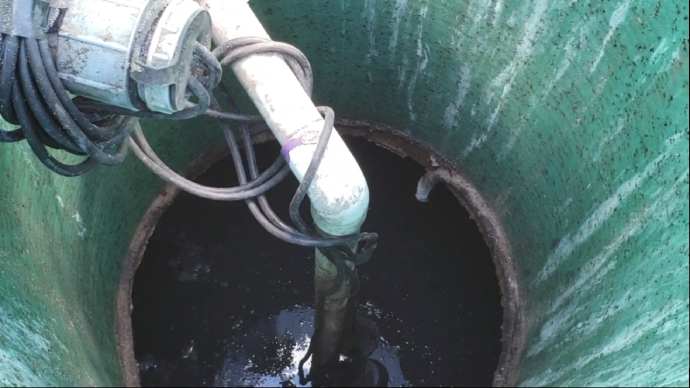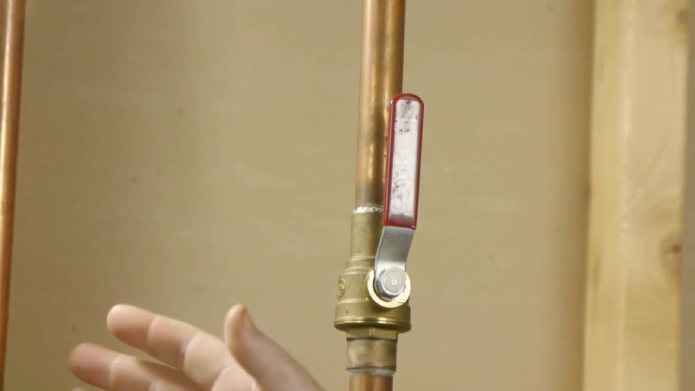Last Updated on May 4, 2023
Sump pumps and septic systems are two essential components for proper functioning of your home’s water system. But can a sump pump drain into a septic system?
Septic tanks shouldn’t get water from sump pumps. The extra water flow can kill the bacterial process and lead to early failure of the septic system and costly fines if it is done without local authorities’ approval.
Fortunately, you can discharge to the municipal sewer, install a French drain or dry well, or pump water to an above-ground tank. Today, we’ll uncover potential drawbacks and alternate solutions that may be more advantageous.
Can Sump Pump Drain into Septic System: Why Not?

Sump pumps are often essential for protecting property located in low-lying areas from flooding, but if not installed correctly or used improperly, they can cause considerable damage. Let’s investigate why it is important to avoid draining sump pump water into septic systems and the risks associated with doing so.
1: Overloads the System and Decreases Performance
During rainy periods, sump pumps can overwhelm a septic system when their drainage is connected directly. The increased water pressure due to excess runoff may cause the pipes and tanks of the septic system to become overloaded.
It leads to a decrease in the septic system’s performance due to decreased absorption capacities of soils.
2: Increased Risk of Early Septic System Failure
Sump pump drainage into a septic system also increases the risk of early failure due to several factors. Most sump pumps discharge effluent with highly suspended solid concentrations.
These solids are forced into a leach field or pipes, causing them to clog or fail prematurely. Massive volumes of water can drastically reduce the amount of time bacteria has to break down pollutants before they are discharged into receiving waterways or surfaces.
It leads to significantly weakened purification processes. As such, this reduces efficiency in the waste breakdown and ultimately leads to high levels of pollutants entering our environment.
3: Legal and Regulatory Considerations
It’s also important to consider all potential legal ramifications associated with improper drainage of sump pump effluent into a septic system.
Different regulations regarding proper disposal methods may have been implemented depending on location. So, failing to adhere could result in costly fines or other penalties local authorities impose.
If environmental contamination is found to be caused by improper wastewater disposal, it could lead to criminal charges. This increases costs and potential jail time for those involved in its installation or use activities.
Alternatives to Draining a Sump Pump into a Septic System

Many homeowners with sump pumps need an alternative way to safely and effectively drain the water from their homes. Alternatively, it can be drained into a city sewer system, dry well, French Drain, ditch, lawn, or garden.
1: Discharging to the City Sewer System
Homeowners looking for a unique solution to draining their sump pumps can connect them directly to municipal or city sewer systems, provided local regulations allow it. This attractive alternative could significantly reduce excess water buildup in your home and environment.
If your municipality permits this type of discharge, you must install a discharge pipe from your sump pump to the nearest sewer line. Installing a check valve at the end of the discharge pipe is also important to prevent sewage backflow into your home.
You should consider installing a backflow preventer to avoid any potential sewage backup in your home. So, connecting to a municipal sewer system also comes with additional costs related to purchasing and installing pipes and fittings and tapping fees.
2: Discharging to the Dry Well or French Drain
The best location for a sump pump to drain is an area lower than the foundation and away from the house, such as a storm sewer, French drain or dry well. Perfect for draining storm runoff, both offer a cost-effective alternative with long term results.
A dry well is typically constructed by digging out a downhill area from where water needs drainage. Then, fill it with gravel or crushed stone before covering it again with soil.
The idea behind this approach is that rainwater enters through small holes in its walls. It will quickly disperse within its material before slowly trickling back down into the ground below it.
On the other hand, a French drain consists of underground channels lined with perforated pipe surrounded by gravel or crushed stone. It allows water to enter them before slowly dispersing through perforations in its walls again into the surrounding soil beneath it.
Both methods are relatively simple DIY projects that require minimal cost (other than labor) and offer efficient drainage solutions without posing any risks of contaminating groundwater sources.
3: Above-Ground Storage Tank
The third alternative method for draining water from sump pumps is pumping it up into an above-ground storage tank. You can also drain into a drainage ditch, lawn, or garden.
It can be used directly on-site or discharged off-site through pipes connected to adjoining properties or bodies of water with permits. This method offers homeowners more control over where their wastewater goes.
It reduces potential risks of contaminating natural groundwater sources near their homes. But, this option comes at increased costs for purchasing tanks and providing proper maintenance throughout their lifespan. It may be anywhere between 5–20 years, depending on size/material.
How should a sump pump drain outside?

When setting up the discharge hose for your sump pump, you must choose the right size and length of pipe. A smaller pipe will restrict flow capacity, while larger pipes are expensive.
Slope the discharge hose away from the house at least 5 degrees to ensure proper drainage. Ensure to use a check valve so that water doesn’t flow back into the pump in case of power outages or other problems.
It would be best if you also considered installing a splash block or pop-up emitter at the exit point of the pipe to prevent erosion and help distribute water properly. Remember to inspect and maintain your sump pump regularly for maximum efficiency.
Can you bury a sump pump discharge hose?
You can bury a discharge hose, but some precautions must be taken first. The pipe should be buried at least 12 inches deep so it doesn’t get exposed to extreme weather or clogged by debris over time.
A perforated hose is preferred when burying because it allows water to disperse evenly underground without pooling near the house’s foundation. It’s also important to slope the pipe away from your home.
Ensure that your discharge location is far enough away from any property lines according to local regulations and ordinances.
Why does your sump pump smell like septic?
A foul smell from a sump pump may indicate a problem with the septic system. This could be due to sewage infiltration or organic matter growth in the septic tank. If not addressed quickly, this issue can cause serious damage to the home and even create health hazards.
The odor will most likely manifest itself in the lower levels of the house near the sump pit as it is designed to remove excess water from these areas. It is important to take proper measures to ensure that both systems are well maintained so as to prevent such problems from arising in the future.
Is the sump pump related to septic tanks?
Sump pumps and septic tanks are two separate components of home basement systems. While both are considered part of indoor septic systems, they serve very different purposes.
A septic tank is designed to treat wastewater from plumbing fixtures such as sinks, bathtubs, and toilets before discharging it into leach fields, a sanitary sewer, or municipal sewer. The tank stores waste until it is broken down by bacterial action within it before being released into its designated drain field.
Sump pumps are designed solely to remove excess groundwater around homes due to either too heavy rainfall or abnormally high water tables in certain regions. They do not process wastewater. Instead, they remove it before rerouting it away from the property’s foundation.
Understand the Impact of Draining a Sump Pump Into Your Septic System
Homeowners need to understand the implications of draining a sump pump into their septic system. Draining a sump pump directly into a septic system is generally not recommended due to the potential for disrupting bacterial processes and early failure of the entire system.
If you choose to do so, ensure you get approval from your local authorities first. The safest route is to drain your sump pump to an above-ground storage tank or municipal sewer system or install a dry well or French drain.



